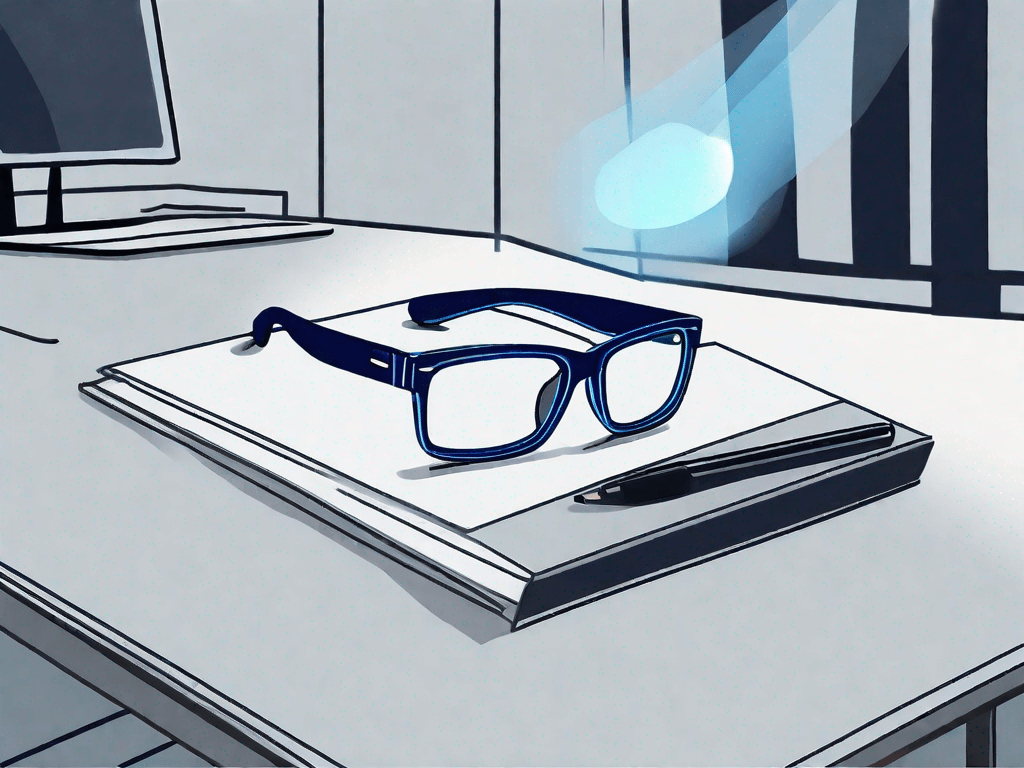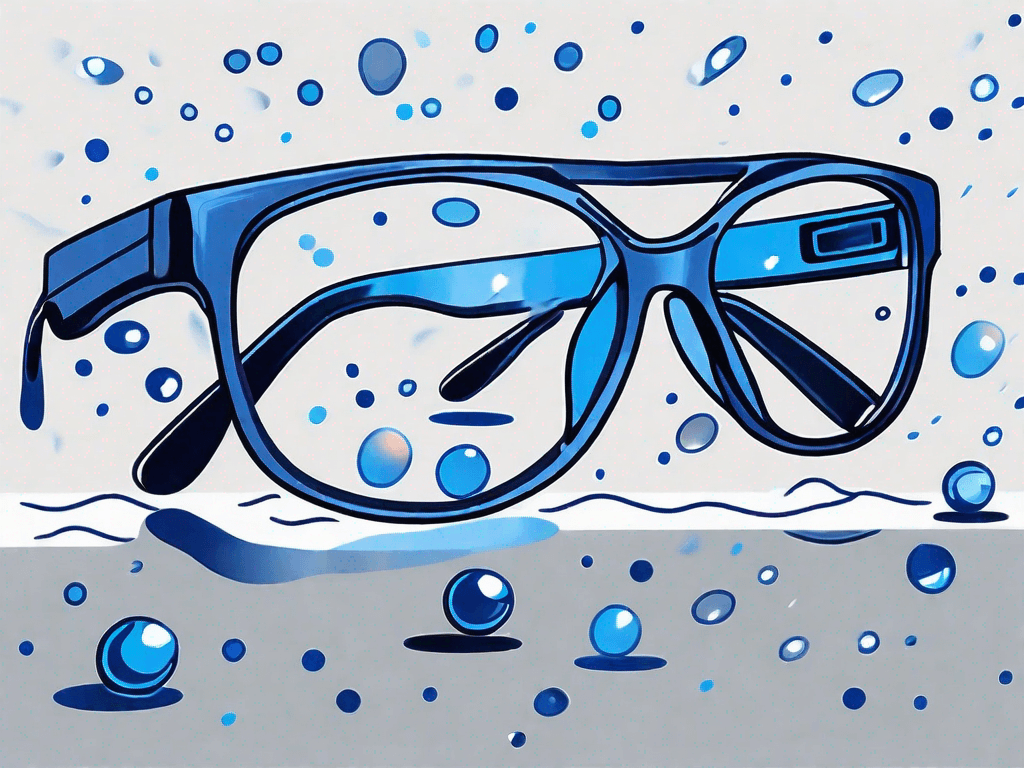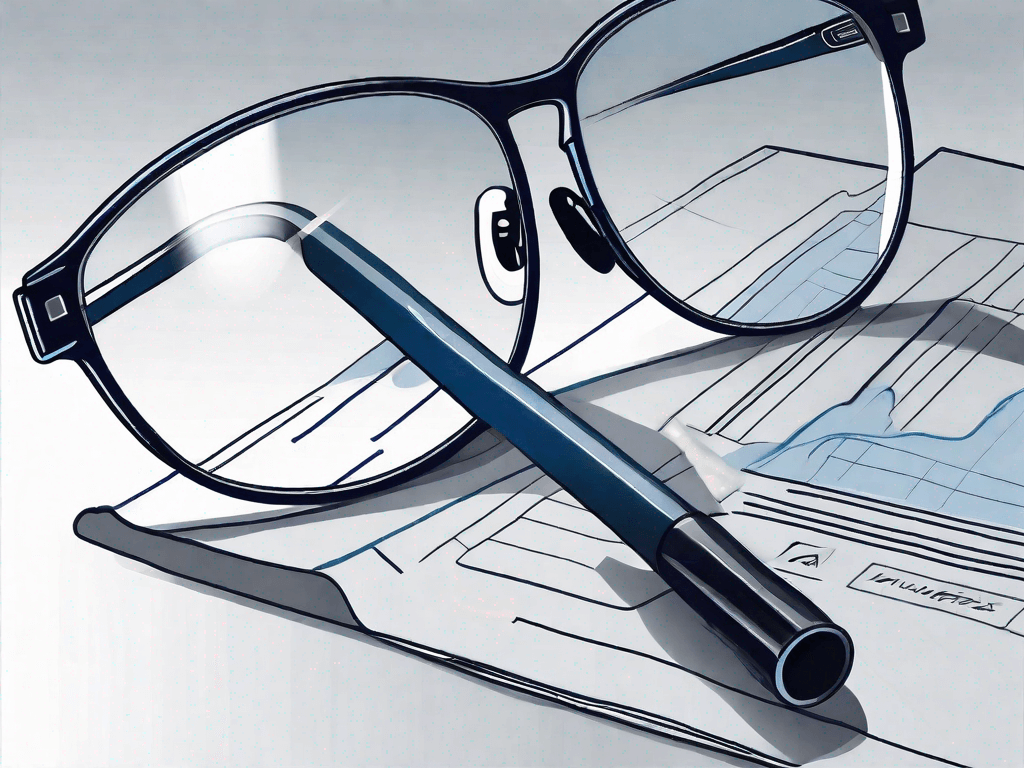Do Blue Light Blocking Glasses Have a Tint?
Blue light blocking glasses have gained popularity in recent years as more and more people spend extended periods of time in front of digital screens. These glasses are designed to filter out harmful blue light emitted by electronic devices, helping to reduce eye strain and improve sleep quality. But do blue light blocking glasses have a tint? In this article, we will delve into the science behind blue light blocking glasses and explore the impact of tint on vision and comfort. We will also provide tips on how to choose the right pair of glasses and debunk common misconceptions about the tint.
Understanding Blue Light Blocking Glasses
Before we delve into the topic of tint in blue light blocking glasses, let's first understand how these glasses work. Blue light is a high-energy visible light that is emitted by electronic devices such as smartphones, tablets, and computer screens. While some blue light is essential for regulating our sleep-wake cycle, excessive exposure can lead to digital eye strain, blurred vision, and even sleep disturbances.
The science behind blue light blocking glasses lies in their special lens technology that filters out a certain portion of blue light. These glasses typically have a yellowish tint, which is designed to block the most harmful wavelengths of blue light while allowing other colors to pass through. By reducing the amount of blue light that reaches our eyes, blue light blocking glasses aim to alleviate the negative effects associated with prolonged screen time.
The Science Behind Blue Light
Blue light is part of the visible light spectrum, with wavelengths ranging from 380 to 500 nanometers. It has shorter wavelengths and higher energy compared to other colors in the spectrum, such as red or green light. Blue light is present in natural sunlight and plays a crucial role in regulating our circadian rhythm, alertness, and overall well-being. However, with the increase in screen usage, our exposure to artificial blue light has significantly increased.
When blue light enters the lens, it interacts with the specialized coatings on the glasses. These coatings are designed to absorb the blue light, preventing it from reaching the eyes. The selective filtering process helps to reduce the potential damage caused by blue light, such as eye strain and disrupted sleep patterns.
How Blue Light Blocking Glasses Work
Blue light blocking glasses utilize specialized lenses that contain a blue light filter. This filter helps to selectively block out blue light while still allowing other visible light to pass through. The yellowish tint in these glasses is what aids in filtering out the harmful blue light wavelengths.
When blue light enters the lens, the special coatings on the glasses absorb the blue light, preventing it from reaching the eyes. This selective filtering helps to reduce the potential damage caused by blue light, such as eye strain and disrupted sleep patterns.
Furthermore, blue light blocking glasses are designed to be worn during screen time activities, such as working on a computer or watching television. The lenses are crafted to provide optimal protection against blue light, ensuring that your eyes are shielded from its harmful effects.
It's important to note that blue light blocking glasses are not just for individuals who spend long hours in front of screens. They can also be beneficial for those who experience eye strain or have trouble sleeping after using electronic devices. By wearing blue light blocking glasses, you can minimize the impact of blue light on your eyes and improve your overall visual comfort.
In addition to their protective benefits, blue light blocking glasses come in various styles and designs, making them a fashionable accessory. Whether you prefer a classic frame or a trendy design, there are options available to suit your personal style.
In conclusion, blue light blocking glasses are a valuable tool in today's digital age. By understanding the science behind blue light and how these glasses work, you can make an informed decision about incorporating them into your daily routine. Whether you're a student, professional, or simply someone who enjoys spending time on electronic devices, blue light blocking glasses can help protect your eyes and promote healthier screen habits.
The Tint in Blue Light Blocking Glasses
Now that we understand the basic working principle of blue light blocking glasses, let's dig deeper into the tint aspect. Many people wonder why these glasses have a yellow or amber tint, and whether it affects their vision or comfort.
Blue light blocking glasses have gained popularity in recent years due to the increasing use of electronic devices and the potential harm caused by prolonged exposure to blue light. These glasses are designed to filter out the harmful blue light wavelengths emitted by digital screens, LED lights, and other sources.
The tint in blue light blocking glasses serves a purpose beyond just aesthetics. The yellowish tint is specifically chosen to enhance the glasses' ability to filter out blue light. This tint filters out the harmful blue light wavelengths more effectively, offering higher levels of protection for your eyes.
Additionally, the tint can help increase contrast and reduce glare, especially when using electronic devices in brightly lit environments or during nighttime. By minimizing glare, blue light blocking glasses can further alleviate eye strain and improve visual comfort.
When you wear blue light blocking glasses with a yellow or amber tint, you'll notice that the colors of your surroundings may appear slightly altered. This is because the tint selectively blocks certain wavelengths of light, including some blue light. However, the impact on color perception is minimal and should not significantly affect your ability to see and distinguish colors accurately.
Variations in Tint Color
While the majority of blue light blocking glasses feature a yellowish tint, some variations in tint color are available. These variations include amber, orange, and even clear lenses. Different tint colors may have varying levels of blocking effectiveness and appeal to personal preferences.
Amber tints, reminiscent of yellow, tend to offer higher blue light blocking capabilities compared to other shades. These lenses are particularly useful for individuals who spend long hours in front of screens or in environments with intense blue light exposure. The amber tint provides an extra layer of protection, reducing the potential risk of eye strain, headaches, and sleep disturbances caused by blue light.
On the other hand, orange tints can provide a warmer, more soothing tone and may be preferable for individuals who find yellowish lenses too intense. The orange tint still effectively blocks blue light but with a slightly different visual experience. Some people find the orange tint more comfortable and less distracting, especially when using their devices for extended periods.
Clear lenses, although without visible tint, still offer blue light protection but may not provide as much contrast enhancement or glare reduction as tinted options. These lenses are a popular choice for those who prefer a more natural viewing experience without any color alteration.
When choosing blue light blocking glasses, it's essential to consider your specific needs and preferences. Whether you opt for the traditional yellow tint, the amber or orange variations, or even clear lenses, the primary goal remains the same – to protect your eyes from the potential harm of blue light and improve your visual comfort in the digital age.
Impact of Tint on Vision and Comfort
One of the concerns many people have when considering blue light blocking glasses is how the tint may affect their vision and overall comfort. Let's examine these factors below:
Effects on Visual Clarity
The tint in blue light blocking glasses is specifically designed to filter out blue light while allowing other colors to pass through. This means that the impact on visual clarity is minimal. In fact, some users report enhanced visual acuity and improved contrast perception when wearing blue light blocking glasses.
When you wear blue light blocking glasses, the tint helps to reduce the glare from digital screens, resulting in sharper and more comfortable vision during screen use. The tint acts as a shield, preventing the harsh blue light emitted by electronic devices from reaching your eyes directly. This can make it easier for you to focus on the screen and read text without straining your eyes.
Furthermore, the tinted lenses can enhance the colors and details in your surroundings. By selectively blocking out blue light, the glasses can improve contrast perception, making objects appear more vibrant and defined. This can be particularly beneficial when engaging in activities that require visual precision, such as reading small text or working with intricate details.
Influence on Eye Comfort
A common misconception is that the tint in blue light blocking glasses may cause discomfort or alter natural color perception. However, the yellowish tint is carefully calibrated to provide a balance between blue light protection and visual comfort.
The tinted lenses have been designed to mimic the natural filtering properties of our eyes. Our eyes have a natural mechanism to filter out excessive blue light, and the tint in blue light blocking glasses replicates this process. By doing so, the glasses allow for a more comfortable viewing experience with reduced eye strain.
Moreover, the yellowish tint can have a soothing effect on the eyes. It can help to relax the eye muscles and reduce fatigue, especially during prolonged screen use. This can be particularly beneficial for individuals who spend long hours in front of digital devices, as it can help alleviate symptoms of digital eye strain, such as dryness, redness, and irritation.
Additionally, the tint in blue light blocking glasses can improve sleep quality. Exposure to blue light in the evening can disrupt the natural sleep-wake cycle by suppressing the production of melatonin, a hormone that regulates sleep. By blocking out blue light, the glasses can help promote better sleep by allowing your body to produce melatonin naturally.
Overall, the tint in blue light blocking glasses has been carefully engineered to provide optimal vision and comfort. It enhances visual clarity, reduces eye strain, and promotes a more comfortable viewing experience. By investing in blue light blocking glasses, you can protect your eyes from the harmful effects of blue light while enjoying enhanced visual performance and comfort.
Choosing the Right Blue Light Blocking Glasses
When it comes to selecting blue light blocking glasses, there are a few factors to consider:
Factors to Consider
- Blue light filtering effectiveness: Look for glasses that provide adequate blue light protection. Check for the level of blue light blocking indicated by the manufacturer or look for glasses that are certified by reputable organizations.
- Tint preference: Consider your personal preference regarding tint color. Yellowish tints are most common and provide effective blue light filtration, but you may opt for amber, orange, or clear lenses based on your style and comfort.
- Frame style and fit: Ensure that the glasses you choose fit your face comfortably and suit your style. Proper frame fit is essential for long periods of comfortable wear.
- Additional features: Some blue light blocking glasses may come with additional features such as anti-glare coatings or scratch resistance. Consider these features based on your specific needs.
Tinted vs. Clear Blue Light Blocking Glasses
While tinted blue light blocking glasses are widely popular, clear blue light blocking glasses are also available on the market. Clear glasses offer the benefit of blue light protection without altering color perception. However, they may not provide the same level of contrast enhancement or glare reduction as tinted options. Ultimately, the choice between tinted and clear glasses depends on personal preference and intended use.
When it comes to blue light filtering effectiveness, it is important to understand the level of protection provided by the glasses you choose. Different manufacturers may indicate the level of blue light blocking in different ways, so it is essential to do your research and choose glasses that offer adequate protection for your needs. Additionally, you can look for glasses that are certified by reputable organizations, as this can provide further assurance of their effectiveness.
Tint preference is another crucial factor to consider when selecting blue light blocking glasses. While yellowish tints are the most common and provide effective blue light filtration, you may have personal preferences that lead you to choose amber, orange, or even clear lenses. It's important to choose a tint that not only filters out blue light but also suits your style and comfort.
Frame style and fit play a significant role in the overall comfort and usability of blue light blocking glasses. It is essential to ensure that the glasses you choose fit your face comfortably and securely. Ill-fitting glasses can cause discomfort and may not provide the intended level of blue light protection. Take the time to try on different frames and find the one that suits your face shape and personal style.
In addition to the basic features, some blue light blocking glasses come with additional features that can enhance your overall experience. Anti-glare coatings, for example, can reduce the amount of glare you experience when using digital devices, making your viewing experience more comfortable. Scratch resistance is another feature to consider, as it can help prolong the lifespan of your glasses and keep them looking new for longer.
Now, let's dive deeper into the topic of tinted vs. clear blue light blocking glasses. Tinted glasses are widely popular due to their ability to filter out blue light effectively. The yellowish tint is commonly used as it provides a good balance between blue light filtration and color perception. However, if you are someone who needs accurate color perception or prefers a more natural view, clear blue light blocking glasses are also available on the market. Clear glasses offer the benefit of blue light protection without altering color perception. This can be particularly useful for individuals who work in industries where color accuracy is crucial, such as graphic design or photography.
While clear glasses provide blue light protection, it's important to note that they may not offer the same level of contrast enhancement or glare reduction as tinted options. Tinted glasses can enhance contrast, making it easier to distinguish between different objects and reducing eye strain. They also provide additional protection against glare from digital screens. If you find yourself frequently working in environments with bright lights or using devices with high levels of glare, tinted blue light blocking glasses may be the better choice for you.
The choice between tinted and clear blue light blocking glasses ultimately depends on personal preference and intended use. Consider factors such as your need for color accuracy, contrast enhancement, and glare reduction when making your decision. Remember to prioritize the level of blue light filtering effectiveness, frame style and fit, and any additional features that may enhance your overall experience. With the right blue light blocking glasses, you can protect your eyes and enjoy a more comfortable digital viewing experience.
Common Misconceptions about Blue Light Blocking Glasses
Despite the growing popularity of blue light blocking glasses, there are still some misconceptions surrounding their effectiveness and the role of the tint. Let's debunk a few of these myths:
Debunking Myths about the Tint
Myth 1: The tint in blue light blocking glasses distorts color perception.
Fact: The tint in blue light blocking glasses is carefully calibrated to minimize color distortion while still effectively filtering out blue light. Your color perception should remain largely unaffected.
Addressing Concerns about Effectiveness
Myth 2: Blue light blocking glasses are not effective in reducing eye strain.
Fact: Blue light blocking glasses have been shown to reduce the symptoms of digital eye strain, such as dry eyes, headaches, and blurred vision. While individual experiences may vary, many users find significant relief with these glasses.
Myth 3: Tinted blue light blocking glasses are more effective than clear glasses.
Fact: Both tinted and clear blue light blocking glasses offer protection against blue light. The tint primarily helps to enhance contrast and reduce glare, while clear glasses provide blue light filtering without altering color perception.
In conclusion, blue light blocking glasses do have a tint, and this tint serves an important purpose in filtering out harmful blue light wavelengths. The tint enhances the effectiveness of the glasses, improves visual comfort, and reduces eye strain. When choosing blue light blocking glasses, consider factors such as blue light filtering effectiveness, tint preference, frame style, and additional features. Understanding the science behind blue light blocking glasses and debunking common misconceptions will help you make an informed decision and prioritize your vision health in the digital age.





